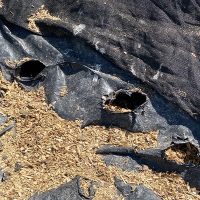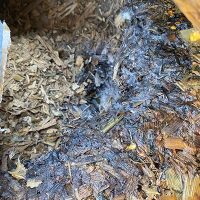Specialist Nutrition IE
Ballymountain, Waterford, X91 V6YR, Ireland
Specialist Nutrition IE
Ballymountain, Waterford, X91 V6YR, Ireland
Specialist Nutrition IE
Ballymountain, Waterford, X91 V6YR, Ireland

First cut grass silage has yielded reasonably but prospects for 2nd or late cuts are of concern due to the lack of rain and also because any inorganic Nitrogen that has been applied is still sat on top of the ground. Maize has got away well and the cereals, are thirsty and need some rain especially.
Grazing is burning off once the cows have eaten it, so a lot of farms are having to buffer feed and use valuable stocks of silage even feeding this year’s 1st cut already in some cases.
So yet again and we make no apology for saying it we need to focus not only on quantity but also keep our eye firmly on the quality of forages whilst trying to meet our total forage plan. Leaving grass for later cutting will not add to the quantity a great deal but will reduce quality significantly, producing lower digestible silage that will restrict dry matter intakes.
Be aware of clamp damage
Check for potential damage to the sheets by birds and vermin. Pheasants and crows particularly like to peck holes through the plastic causing significant deterioration of the silage below which is often going unnoticed until the clamp is opened in the winter.
The outcome of using an effective inoculant and oxygen barrier plastic is negated by allowing sheet damage to go unchecked as this results in a constant stream of air and water getting into the silage.
The pictures below show how a sealed maize clamp can have significant losses due to sheeting damage being left unchecked which results in spoilage, aerobic deterioration and sever heating. This clamp is losing dry matter and energy that could have been fed to cattle.
051 833071



Another major area where you can save forage is to reduce waste, a lot of farmers see the ‘sun’ as an inoculant but this is a myth.
Here a crop and condition specific inoculant such as our Magniva range will reduce dry matter losses by improving fermentation and significantly reducing overall aerobic losses. You can save as much as 15% of the total forage dry matter you harvest.
Look at the cereals you have (or a neighbour may have) and see if fermented wholecrop could be a good option to top up stocks. Once cereals have been cut for wholecrop it’s a great opportunity to plant either a fodder crop for young stock/dry cows or even a grass ley and possibly get a cut or graze before the end of the season.
Some farmers put in an Italian Ryegrass or Westerwolds after maize and take a very early 1st
cut to see the winter out in late March or early April before replanting with maize again.
